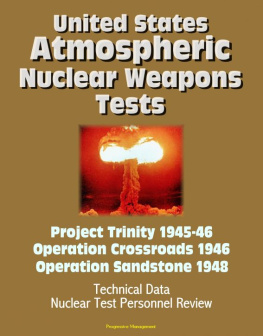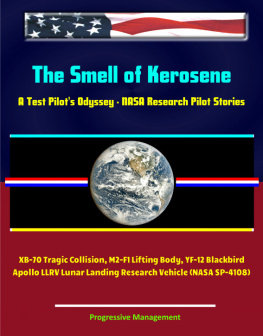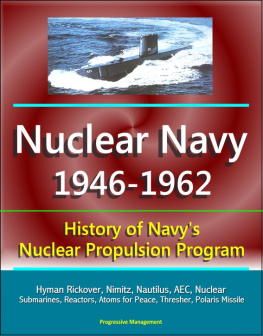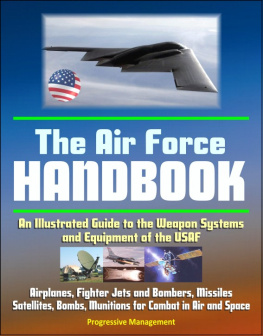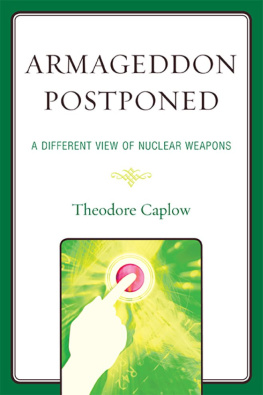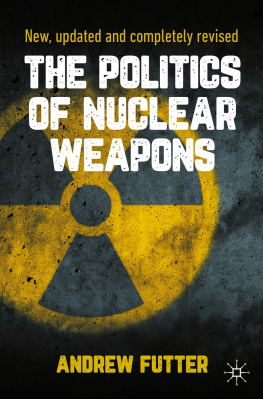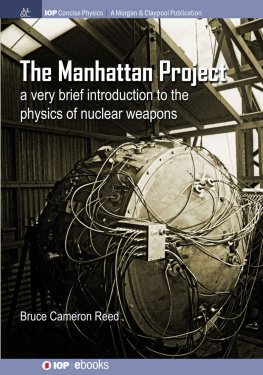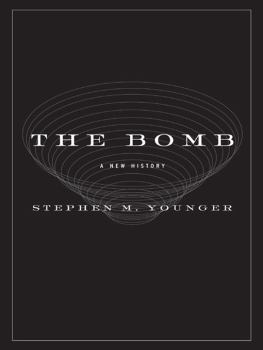United States Atmospheric Nuclear WeaponsTests: Project Trinity 1945-46, Operation Crossroads 1946,Operation Sandstone 1948 - Technical Data, Nuclear Test PersonnelReview
* * * * * * * * * * * *
Progressive Management
* * * * * * * * * * * *
Smashwords Edition
Copyright 2014 Progressive Management
Questions? Suggestions? Comments? Concerns?Please contact the publisher directly at
Remember, the book retailer can't answer yourquestions, but we can!
* * * * * * * * * * *
Smashwords Edition, License Notes
This ebook is licensed for your personalenjoyment only. This ebook may not be re-sold or given away toother people. If you would like to share this book with anotherperson, please purchase an additional copy for each person youshare it with. If you're reading this book and did not purchase it,or it was not purchased for your use only, then you should returnto Smashwords.com and purchase your own copy. Thank you forrespecting the hard work of this author.
* * * * * * * * * * *
This is a privately authored news service andeducational publication of Progressive Management. Our publicationssynthesize official government information with original material -they are not produced by the federal government. They are designedto provide a convenient user-friendly reference work to uniformlypresent authoritative knowledge that can be rapidly read, reviewedor searched. Vast archives of important data that might otherwiseremain inaccessible are available for instant review no matterwhere you are. This e-book format makes a great reference work andeducational tool. There is no other reference book that is asconvenient, comprehensive, thoroughly researched, and portable -everything you need to know, from renowned experts you trust. Forover a quarter of a century, our news, educational, technical,scientific, and medical publications have made unique and valuablereferences accessible to all people. Our e-books put knowledge atyour fingertips, and an expert in your pocket!

* * * * * * * * * * * *
CONTENTS
* * * * * * * * * * * *
* * * * * * * * * * * *
United States Atmospheric Nuclear WeaponsTests
Nuclear Test Personnel Review
Prepared by The Defense Nuclear Agency asExecutive Agency for the Department of Defense
* * * * * * * * * * * *
KEYWORDS
TRINITY
Los Alamos Scientific Laboratory
Alamogordo Bombing Range
Manhattan Engineer District
Manhattan Project
Personnel Dosimetry
Radiation Exposure
Nuclear Weapons Testing
ABSTRACT
This report describes the activities of anestimated 1,000 personnel, both military and civilian, in ProjectTRINITY, which culminated in detonation of the first nucleardevice, in New Mexico in 1945. Scientific and diagnosticexperiments to evaluate the effects of the nuclear device were theprimary activities engaging military personnel.
SUPPLEMENTARY NOTES
The Defense Nuclear Agency Action Officer,Lt. Col. H. L. Reese, USAF, under whom this work was done, wishesto acknowledge the research and editing contribution of numerousreviewers in the military services and other organizations inaddition to those writers listed in block 7.
* * * * * * * * * * * *
Defense Nuclear Agency
Public Affairs Office
Washington, D C 20305
Subject: Project TRINITY
Project TRINITY, conducted by the ManhattanEngineer District (MED), was designed to test and assess theeffects of a nuclear weapon. The TRINITY nuclear device wasdetonated on a 100-foot tower on the Alamogordo Bombing Range insouth-central New Mexico at 0530 hours on 16 July 1945. The nuclearyield of the detonation was equivalent to the energy released bydetonating 19 kilotons of TNT. At shot-time, the temperature was21.8 degrees Celsius, and surface air pressure was 850 millibars.The winds were nearly calm at the surface; at 10,300 feet abovemean sea level, they were from the southwest at 10 knots. The windsblew the cloud resulting from the detonation to the northeast. From16 July 1945 through 1946, about 1,000 military and civilianpersonnel took part in Project TRINITY or visited the test site.The location of the test site and its major installations are shownin the accompanying figures.
Military and Scientific Activities
All participants in Project TRINITY, bothmilitary and civilian, were under the authority of the MED. Nomilitary exercises were conducted. The Los Alamos ScientificLaboratory (LASL), which was staffed and administered by theUniversity of California (under contract to the MED), conducteddiagnostic experiments. Civilian and military scientists andtechnicians, with assistance from other military personnel, placedgauges, detectors, and other instruments around ground zero beforethe detonation. Four offsite monitoring posts were established inthe towns of Nogal, Roswell, Socorro, and Fort Sumner, New Mexico.An evacuation detachment consisting of 144 to 160 enlisted men andofficers was established in case protective measures or evacuationof civilians living offsite became necessary. At least 94 of thesepersonnel were from the Provisional Detachment Number 1, Company"B," of the 9812th Technical Service Unit, Army Corps of Engineers.Military police cleared the test area and recorded the locations ofall personnel before the detonation.
A radiological monitor was assigned to eachof the three shelters, which were located to the north, west, andsouth of ground zero. Soon after the detonation, the monitorssurveyed the area immediately around the shelters and thenproceeded out the access road to its intersection with the mainroad, Broadway. Personnel not essential to postshot activities weretransferred from the west and south shelters to the Base Camp,about 16 kilometers southwest of ground zero. Personnel at thenorth shelter were evacuated when a sudden rise in radiation levelswas detected; it was later learned that the instrument had not beenaccurately calibrated and levels had not increased as much as theinstrument indicated. Specially designated groups conducted onsiteand offsite radiological surveys.
Safety Standards and Procedures
The safety criteria established for ProjectTRINITY were based on calculations of the anticipated dangers fromblast pressure, thermal radiation, and ionizing radiation. The TR-7Group, also known as the Medical Group, was responsible forradiological safety. A limit of 5 roentgens of exposure during atwo-month period was established.
The Site and Offsite Monitoring Groups wereboth part of the Medical Group. The Site Monitoring Group wasresponsible for equipping personnel with protective clothing andinstruments to measure radiation exposure, monitoring and recordingpersonnel exposure according to film badge readings and time spentin the test area, and providing for personnel decontamination. TheOffsite Monitoring Group surveyed areas surrounding the test sitefor radioactive fallout. In addition to these two monitoringgroups, a small group of medical technicians provided radiationdetection instruments and monitoring.
Radiation Exposures at Project TRINITY
Dosimetry information is available for about815 individuals who either participated in Project TRINITYactivities or visited the test site between 16 July 1945 and 1January 1947. The listing does not indicate the precise military orunit affiliation of all personnel. Less than six percent of theProject TRINITY participants received exposures greater than 2roentgens. Twenty-three of these individuals received exposuresgreater than 2 but less than 4 roentgens; another 22 individualsreceived between 4 and 15 roentgens.
PREFACE
From 1945 to 1962, the U.S. Government,through the Manhattan Engineer District (MED) and its successoragency, the Atomic Energy Commission (AEC), conducted 235 tests ofnuclear devices at sites in the United States and in the Atlanticand Pacific Oceans. In all, an estimated 220,000 Department ofDefense (DOD)* participants, both military and civilian, werepresent at the tests. Project TRINITY, the war-time effort totest-fire a nuclear explosive device, was the first atmosphericnuclear weapons test.
Next page
